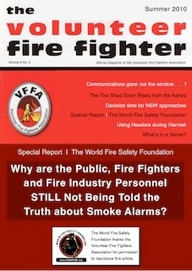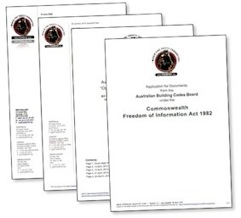




Vermont, USA

They even labelled the most popular type of smoke alarm "fraudulent".
The head of the World Fire Safety Foundation is now meeting Australian fire brigades and government officials in a desperate effort to get the offending devices, ionisation smoke alarms, replaced with more effective devices.
WFSF chairman Adrian Butler said millions of properties with those detectors - which account for more than 95 per cent of those in residences - are at risk. "No one wants to admit publicly these things are defective," he said. "We believe it's fraudulent to call them a smoke alarm."
Ionisation smoke alarms - the cheapest on the market - are banned in the sleeping areas and exits of commercial buildings because they do not catch fires early enough.
They are triggered by combustion particles coming from flame and heat. Even NSW Fire Brigades' own fact sheet admits the devices "may be slow to respond to slow, smouldering fires".
The WFSF wants the Australian standard changed so homes must be fitted with photoelectric smoke alarms, which "see" smoke. However, it fears authorities will be reluctant because conceding the alarm's failings could leave them open to legal action.
Too slow to sound an alarm - millions of homes in danger from slow smoke detectors
Joe Hildebrand | The Daily Telegraph | May 05, 2011 12:00AM

"If they come out and say 'Yeah, these things are faulty' then there's litigation," Volunteer Fire Fighter Association president Peter Cannon said.
"Everybody thinks that they work but they only work with heat and naked flame. Tens of thousands of people have died worldwide over this."
Fire And Rescue NSW said it too now recommended photoelectric smoke alarms over ionisation ones. A spokesman said the standard would be reviewed as new research came in.
"There is no doubt both types of smoke alarms are effective however, on balance, fire services recommend photoelectric alarms, which can sometimes respond faster and are less prone to annoying false alarms,' he added.
"To maximise early warning, Fire And Rescue NSW recommends installation of photoelectric smoke alarms, hard-wired and interconnected, in all residential accommodation."
An estimated 10,000 people in the US alone have died from a lack of warning from ionisation smoke alarms since 1990. Upgrading alarms there has already saved lives, the WFSF said.
Mr Butler added the group had to get action in the US to make Australian authorities pay attention.
MILLIONS of homes in Australia are at risk because their smoke detectors are slow to detect a fire, often going off when it's too late, fire safety experts have warned.
Extracted from The Daily Telegraph website 08 May, 2011










Why are the Public STILL
Not being Told the Truth?

Open Letters and Freedom
of Information Act Applications

Mandatory U.S. Smoke Alarm Legislation Here > > >

Australian Building
Codes Board (ABCB)
The Volunteer Fire
Fighters Association

(c) Copyright 2011 The World Fire Safety Foundation | Last Updated: 17 May, 2011, | Privacy Policy | Disclaimer | Search WFSF site
For errors on, or suggestions for this ‘telegraph’ webpage, contact the WFSF WebMaster | Supporters | About | Media